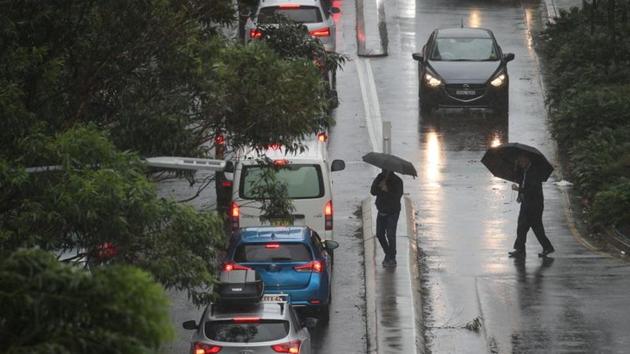Fresh western disturbance brings rain and snow: IMD
Another intense WD is expected to affect the northwestern region on February 27 and 28, which will also bring rain to the northern plains.
The eighth western disturbance (WD) of February hit northwest India on Thursday, bringing thundershowers to the northern plains, including Delhi NCR, and snowfall to Jammu and Kashmir, Himachal Pradesh and Uttarakhand. The maximum temperature also fell by about 3 to 5 degrees in most parts of northwest India due to cloud formation associated with the WD on Friday, according to the India Meteorological Department (IMD).

IMD defines WD to be cyclonic circulation in the mid and lower tropospheric levels which occur in middle latitude westerlies and originate over the Mediterranean Sea, Caspian Sea and
Another intense WD is expected to affect the northwestern region on February 27 and 28, which will also bring rain to the northern plains.
Usually, two to three WDs are expected in each of January and February. In 2020, in January there were 10 WDs, three to four of which were intense ones, according to RK Jenamani, senior scientist at National Weather Forecasting Centre.
“Not only WDs, the easterly wave is also very active. Because of the interaction of winds, there is rain in Madhya Pradesh, Chhattisgarh and rain is likely for parts of east India also. We are seeing a trend of higher number of WDs since last year and easterly waves with high amplitude. It’s very difficult to explain what is causing this,” said K Sathi Devi, head of national weather forecasting centre.
In Delhi and parts of NCR, there were gusty winds on Friday, with speeds of up to 50 kmph on Thursday midnight. “Due to cloud cover we can expect the day temperature to remain low for a couple of days,” said Kuldeep Shrivastava, head of regional weather forecasting centre.
Jolly Grant airport in Dehradun received 40mm of rainfall on Thursday , the highest in northwest India, as per RWFC’s data. The maximum temperature in Delhi on Friday was 20.9°C, 4 degrees below normal and nearly 7 degrees lower to the maximum temperature on Thursday of 27.5°C. “The extra tropical flow regime has come down towards the south. This may be because of natural variability. The other reason is that westerly winds are weaker than normal leading to development of more troughs which bring intense weather to northwestern India,” explained DS Pai, senior scientist at IMD Pune.
Due to a likely formation of anticyclone over Bay of Bengal from February 23, easterly current from Bay of Bengal is very likely to strengthen over east India and cause scattered rain and thundershowers in parts of east India on February 23 and 24.






